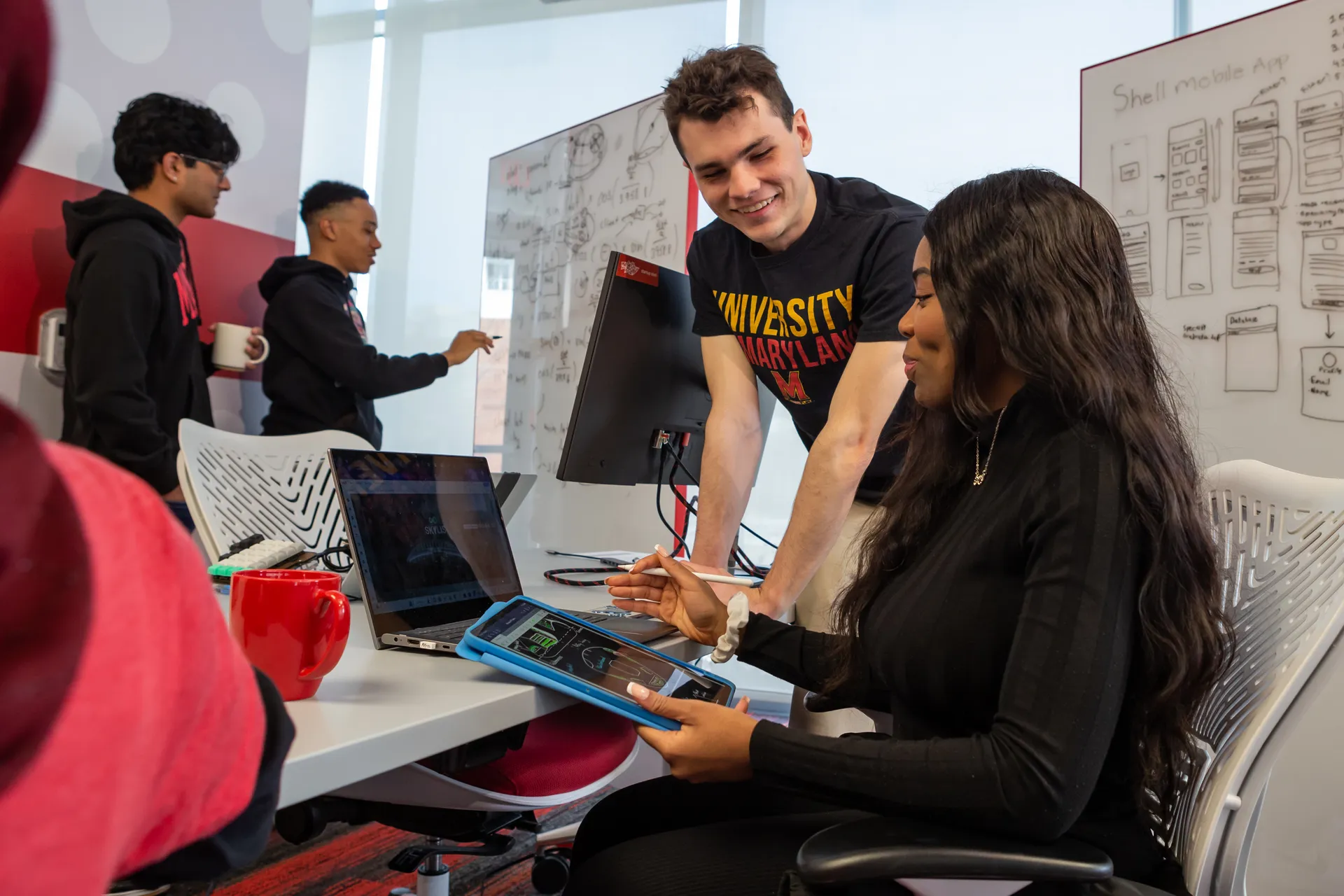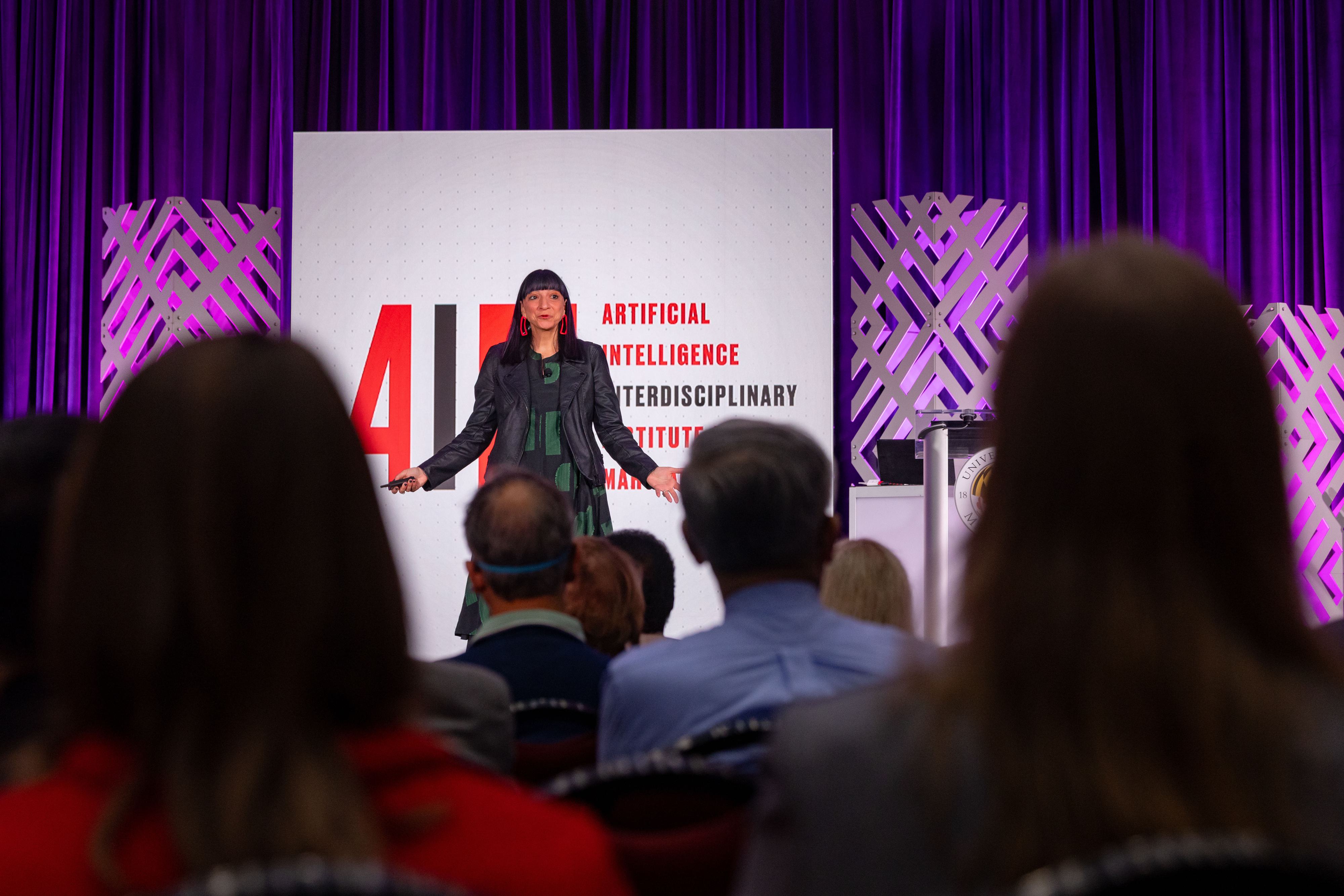Shaping the Future of AI
At the University of Maryland, we’re igniting AI innovation, propelling advancements through groundbreaking research and connecting brilliant minds across fields.
200+
faculty members who study and teach AI
TOP 10
among public universities in AI
U.S. News & World Report
(Best Colleges & Best Graduate Schools)
200+
courses in AI available in 50+ departments

Research
Igniting AI innovation to solve grand challenges
Our campus is a powerhouse of bold ideas, where researchers work together across disciplines to steer AI toward real-world benefits like safer and smarter autonomous vehicles, incisive data analysis for personalized health care and classroom systems to help teachers boost learning.

Academics
Preparing tomorrow’s leaders to harness AI for their future
By partnering with federal, state and industry leaders and expanding our menu of AI-focused classes, majors, minors, and certificate and graduate programs, UMD is preparing students with the technical skills and principled vision to drive tomorrow's economy and contribute to our increasingly dynamic society.

Public Good
Putting people first to shape AI that empowers and inspires
Our AI enterprise empowers communities and creates opportunities by equipping business leaders, policymakers and everyday citizens with all the life-enhancing possibilities of AI grounded in ethics, responsibility and trustworthiness.

AIM: Artificial Intelligence Interdisciplinary Institute at Maryland
UMD’s hub for AI collaboration unites students, faculty and staff in every corner of campus to pursue community engagement, research and development, policy work and training to shape this revolutionary field for the benefit of all.

Higher Ed’s Role in Shaping the Future of AI
At the Washington Post's Global AI Summit, President Darryll J. Pines and AIM Director Hal Daumé III take a deep dive into how colleges and universities are uniquely positioned to shape the future of AI, balancing innovation with responsibility and driving progress that benefits the public good.
Faculty Spotlight

Computer and Language Science
AI for human self-efficacy, mitigating social harms

Humanities
AI and the future of work and human rights

Information Science
Community-based design, equity in AI and machine learning tools

Computer Science
Trustworthy and reliable AI, accuracy of AI detection tools
AI on Campus
Artificial intelligence continues to grow exponentially, creating opportunities to solve the grand challenges of our time... We’re not just adapting to the AI age but shaping its future.
Darryll J. Pines
President, University of Maryland
AI News
Partner with us
Interested in partnering with UMD faculty to uncover new breakthroughs, enrich our student experience or make an impact on our world? Reach out to AIM to get started.



